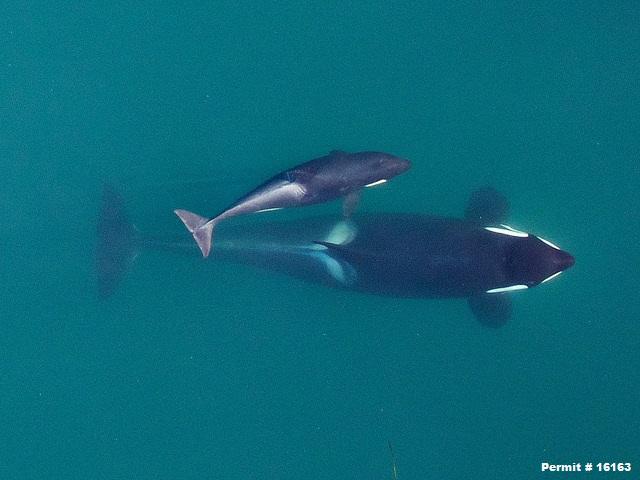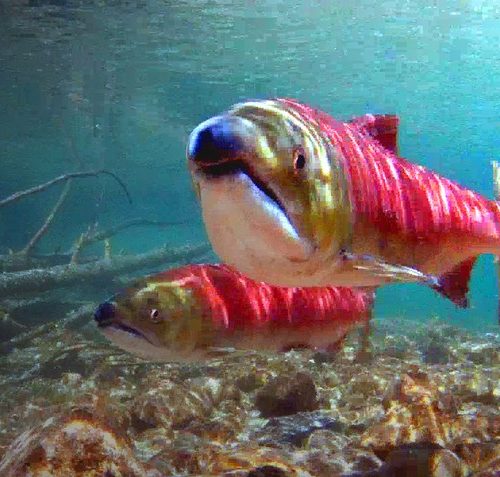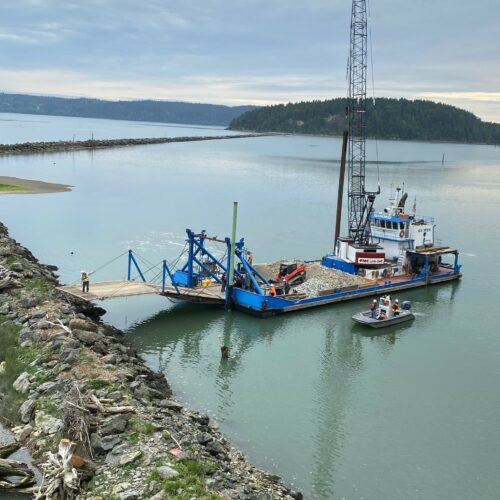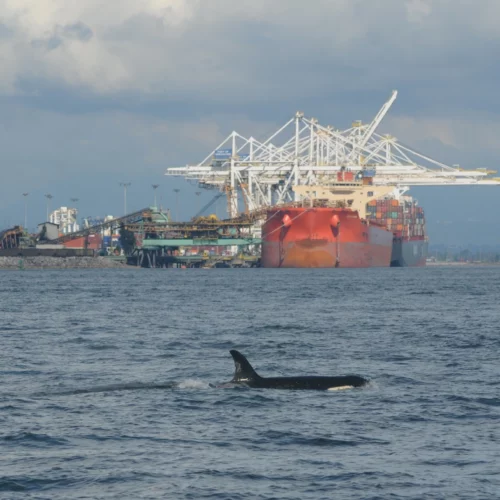
Veterinarians Grapple With How To Save Puget Sound Orca: Salmon Laced With Meds Or Syringe?

Listen
An emaciated orca from the Pacific Northwest’s critically-endangered resident killer whale population could get a pole injection of medicine under the latest prefered option of an emergency response team.
Officials with the lead federal agency, the National Oceanic and Atmospheric Administration, described the changing situation Monday morning.
“Based on our veterinarian’s input, we’re looking at our capability of doing a remote dose of a long-lasting antibiotic,” said Lynne Barre, NOAA’s endangered species recovery coordinator for the Southern Resident killer whales, during a media teleconference.
The tactic with the syringe pole is being prioritized over another option where biologists would hand-feed the orca, known as J50, with live salmon laced with medicine. This is contingent on a boat crew being able to get close to the 4-year-old female, who has not been seen since late last week.
“We would be ideally approaching her when she is separated from her pod members, which is not unusual for her,” said NOAA Regional Stranding coordinator Kristin Wilkinson. “The onboard veterinarian will have the discretion to make that decision in that moment of time, if that is the appropriate course of action.”
The population of Southern Resident killer whales is down to 75 individuals. As a young female, J50 holds particularly high value because of her future reproductive capacity.
J50 belongs to the same family group as an older female, J35, who recently appeared to be grieving and persisted in tending to her dead calf for at least 10 days. The calf died about a half-hour after birth in late July.
J50 and J35 have not been spotted since J-pod swam out of the Strait of Juan de Fuca to the west coast of Vancouver Island late Thursday and Friday.
“Certainly time is of the essence here,” Barre said. “We’re hopeful that J-pod will come back into inland waters where we can continue our work for sample collection and veterinary assessment.”
None of the endangered resident killer whales have tracking beacons attached to them.
Barre said multiple boat teams were on standby Monday to be in position to collect breath droplets and feces from J50, which could provide better diagnostic information for why this orca is in markedly worse condition and malnourished compared to her relatives.
In addition, Lummi Nation fishermen are casting nets to gather Chinook salmon, the preferred prey of the resident orcas.
A separate team of whale scientists was working Monday on how to deliver live salmon to J50 if supplemental feeding is authorized by NOAA headquarters. King County has lent its new research boat, the “SoundGuardian,” to the cause, according to county Executive Dow Constantine’s office.
Barre said operations testing for using live Chinook for nutritional support therapy and administering oral medication would be done with the Lummi tribe and the Whale Sanctuary Project — without whales present.
She said it wasn’t certain whether it would be possible to feed live fish to J50 without negative impact on the individual orca or the pod.
The plight of the iconic orcas is bound to bring heightened attention to a previously scheduled meeting of the state’s Southern Resident Killer Whale Recovery Task Force in Wenatchee Tuesday.
Washington Gov. Jay Inslee established the task force in March to address the major factors affecting orca survival, including lack of prey, environmental contaminants and disturbance by vessels.
The 47-member group is at the stage of formulating short and long-term recommendations, which could include further restrictions on salmon fishing, speed limits for ferries to reduce underwater noise or increased hatchery production of Chinook salmon. The recommendations will be finalized in the fall.
Related Stories:

Tribal members gather to demand U.S. Government fulfill treaty obligations
Sockeye salmon like these are among the salmon species in peril. (Credit: Aaron Kunz) Listen (Runtime 2:57) Read For Northwest tribes, removing the four lower Snake River dams means more

Dead salmon prompt Army Corps of Engineers to repair Skagit River jetty
The Army Corps of Engineers began emergency repair work May 22 on a jetty that sits at the mouth of the Skagit River’s North Fork, near La Conner.
Crews will use cobble and sediment to essentially plug porous areas of the McGlinn Island Jetty. Those gaps have stranded, harmed or killed out-migrating juvenile salmon this spring, according to a press release from the Swinomish Indian Tribal Community.

Captains of big ships eased up on the throttle during trial slowdown to help endangered orcas
The majority of captains of big commercial ships entering and leaving Puget Sound are cooperating with a request to slow down temporarily to reduce underwater noise impacts to the Pacific Northwest’s critically endangered killer whales. The duration of the experimental slowdown – modeled on a similar project in British Columbia – will be extended into the new year, organizers announced after a status report and celebration on the Seattle waterfront Friday.















